What Animals Live In Glacier National Park
Grizzly Bears
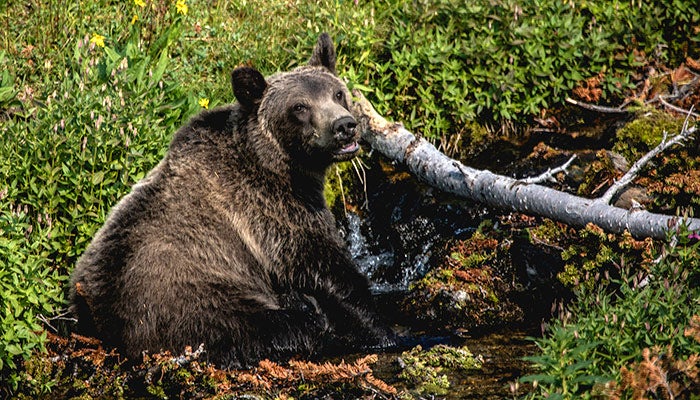
Grizzlies, too known every bit "chocolate-brown bears," weigh up to 700 pounds. They have a distinctive hump between their shoulders that blackness bears do not accept. They have shorter ears and a longer snout than black bears. Grizzlies disseminate huckleberry seeds via their scat and till soil for glacier lilies.
Where to come across them: Grizzlies alive throughout the park, eating berries, parsnip thickets and glacier lilies. On the due east side, some spend leap in valleys and then go up to the high country for summertime. Others spend the unabridged summer in meadows and aspen groves, heading higher to hide.
Mountain Goats
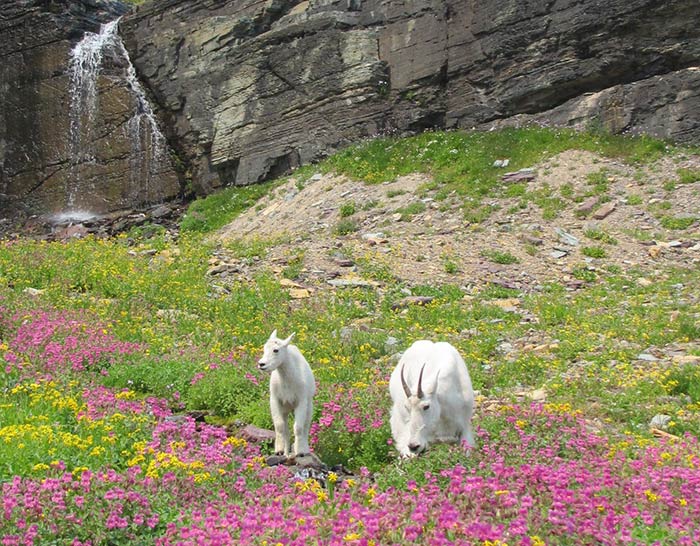
As Glacier's official symbol, mountain goats are covered with two layers of wool that enable them to withstand temperatures that dip to -50F. They have large hooves and rough pads to scale steep, rugged slopes.
Both males and females have black horns and long faces with fur hanging off their chins. Females, called "nannies," live with children and females. Males alive apart in groups of 2-three. They tin bound nearly 12 feet.
Where to encounter them: Await for them on rocky slopes and loftier meadows. They lick salt nearly trails. See them at Logan Laissez passer, Sperry/Gunsight, Subconscious Lake, Iceberg Lake and Grinnell Lake areas.
Moose
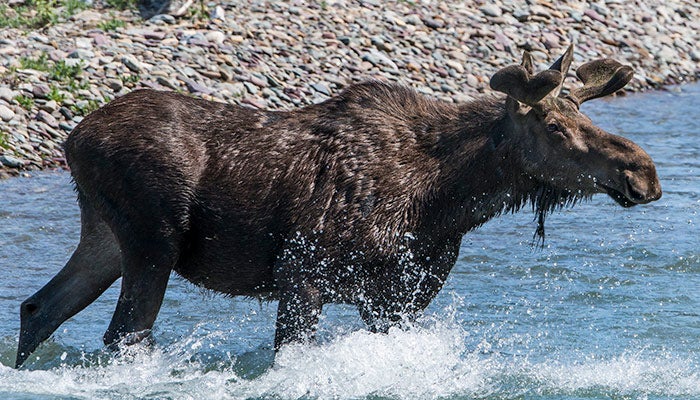
You can spot a male moose easily by its huge antlers that stretch up to half dozen feet. Females don't take antlers. Moose have long snouts, bulbous noses and extra skin under their throats. They are enormous, weighing up to 1,800 pounds.
On land they can reach speeds of up to 35 miles per 60 minutes. Their hooves are made for snow travel, enabling them to navigate deep powder. They also are practiced swimmers, paddling several miles at a fourth dimension.
Where to encounter them: Moose love watery areas and areas with loftier grasses, willows and shrubs. Fishercap Lake surface area is a good place to spot them.
Black Bears
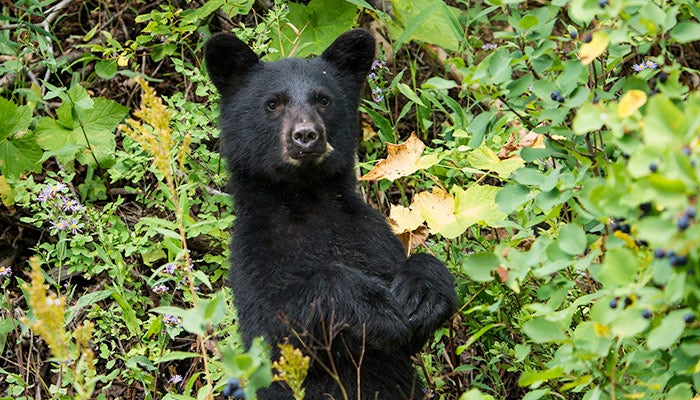
These omnivores tin weigh upward to 400 pounds and stretch from two to four feet tall. They can be blackness, blond or brown, which can pb visitors to misidentify them every bit grizzlies. In spring, they eat shrubs and new shoots in the wood. Throughout summer and fall, they retreat to higher elevations, chasing berries and trout. Black bears hibernate during wintertime and mate throughout summer.
Where to come across them: Black bears live throughout the park. Expect for them in forested areas where they similar to dwell. Maintain at to the lowest degree 100 yards between you and a acquit and e'er behave acquit spray.
Bighorn Sheep
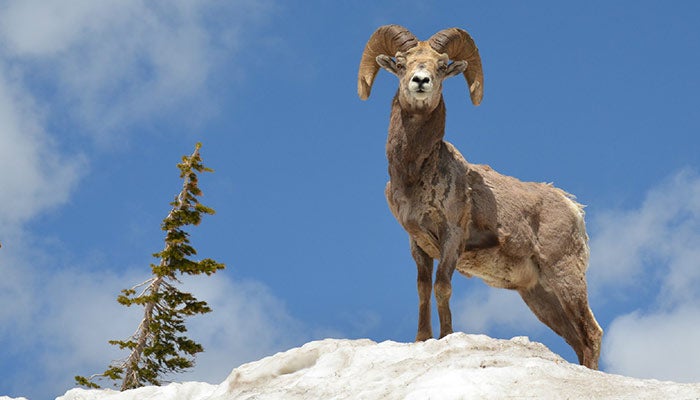
Traveling in groups, bighorn sheep are built for spending long winters at loftier elevation. Born with rough split up hooves, they climb upwards steep, rocky terrain to escape predators. Males, also known as "rams," accept larger horns that can weigh upwards to 30 pounds. Females, referred to equally "ewes," have horns that never form more than half a curl. Bighorn sheep swallow grasses and shrubs. In fall, rams compete for ewes past butting each other for up to 24 hours at a fourth dimension.
Where to see them: See them on the Logan Pass (even in the parking lot). Look up on the grassy slopes of mountain sides and high tall meadows to see bighorn sheep.
Lynx
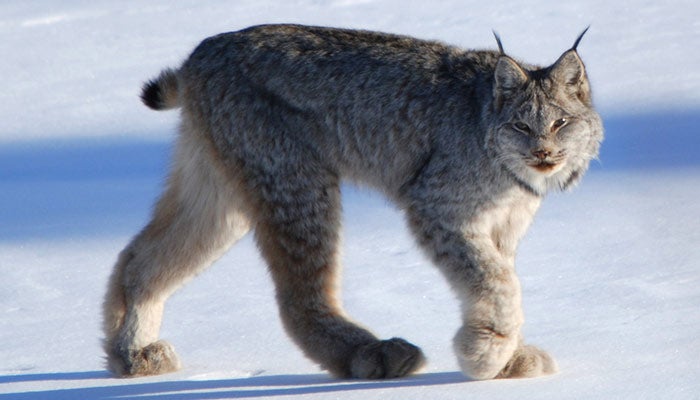
This rare cat with long-ear tufts is a threatened species in the Lower 48 but can be spotted in Glacier. It's larger than a business firm cat, weighing around twenty pounds. Its large, wide furry anxiety help information technology travel easily through snow. Its back legs are larger than its front legs. Its fur is usually gray in winter and calorie-free dark-brown in summer.
Lynx dine on snowshoe hares, birds and rodents. They are primarily lone animals and den in fallen copse and rock ledges.
Where to see them: Lynx prefer dense forests only hunt at higher elevations with more open spaces, then keep your optics peeled for these elusive cats.
Source: https://www.yellowstonepark.com/things-to-do/neighboring-parks/glacier-national-park-wildlife/
Posted by: whatleyephimagent.blogspot.com

0 Response to "What Animals Live In Glacier National Park"
Post a Comment